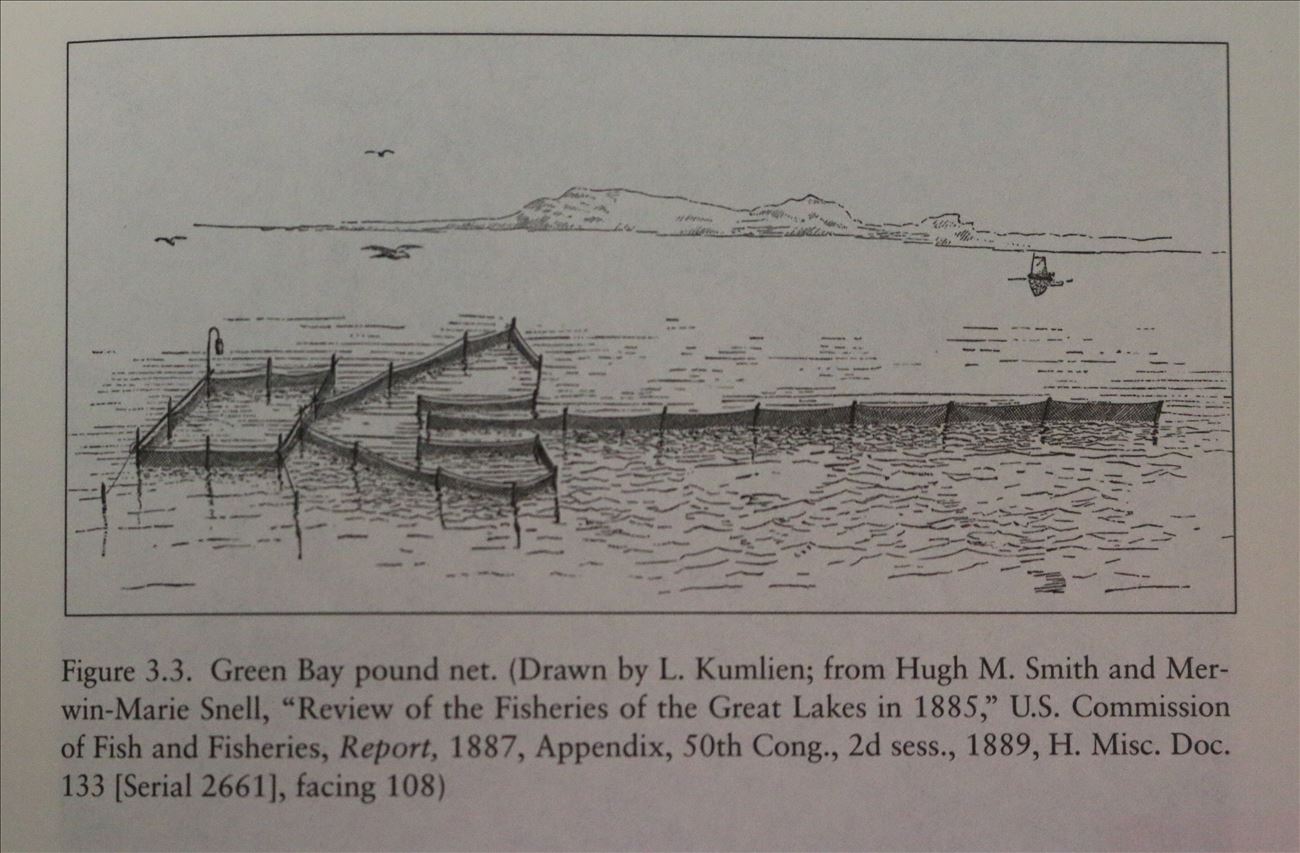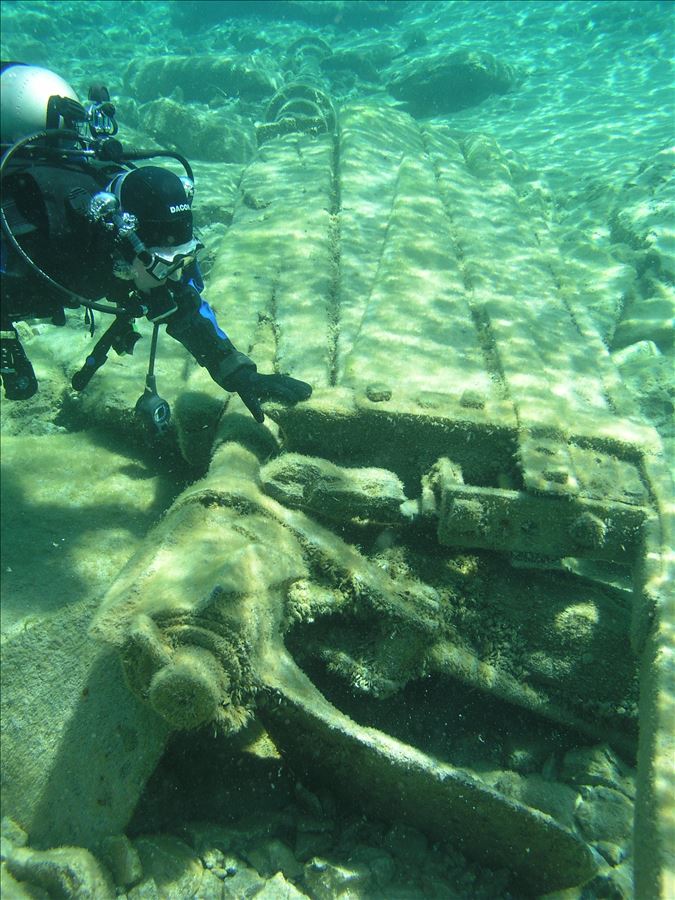Waves crashed against the tug, violently rocking the ship. The wind picked up, dumping frigid water onto the deck. The captain, Tom Fergusen, had a vague idea of where they were, but wasn’t exactly sure. The foggy air made it difficult to see the vast lake. In addition to the fog, rain pelted the deck, contributing to the decreasing visibility. Lightning slashed through the dark sky, followed by the deafening clap of thunder. Fishermen rushed back and forth, trying to keep their supplies from going overboard. Suddenly, the entire ship jolted and there was a huge crash! Fergusen looked over the side of the boat and saw a considerable hole in the tug, which was quickly taking on water. One look at the propeller told him that his boat was not going to get off of this reef. Two of the three propeller blades were missing, taken off by the rocks. The Maxwell started to sink and the men realized that they would have to abandon their ship. Luckily, with the water being as shallow as it was, the men were able to get safely from the sinking boat to the shores of Thunder Bay Island.
The Maxwell was built in Chicago, Illinois by J.P. Smith in 1883. Originally made for Booth Packing Company, this fishing vessel was sold to Huron Fish Company in 1905. There, it was part of a fleet of three fishing tugs that fished in Lake Huron. It stayed there, not venturing far from its home in Alpena. It caught fish using a method called pound net fishing; fisherman put cedar poles attached to nets in the water, often times in between islands. Fish traffic was higher near islands, so the fish would swim into the nets and were guided to a net box, where they were scooped up by the fisherman.
The Maxwell survived and thrived for 25 years before it sank in the cold, fresh water of Lake Huron. Its life ended on September 19, 1908 right off the shore of Thunder Bay Island. As was common for ships during this time, it ran aground near the island, crashing against a reef that was jutting out just below the waves, and the ship started to sink into the water. The propeller was badly damaged due to the impact of hitting the rocks and the ship fell apart. Now, 111 years later, the only recognizable parts of the ship are the stern, the shaft, and the broken propeller.
To this day, the Maxwell lies broken off the coast of Thunder Bay Island. Although the blinding fog, rough waves, and pelting rain were the downfall of this fishing tug, the lake preserved her. Now, she lies in the protected region of the Thunder Bay National Marine Sanctuary as an available wreck for people to visit. There’s no buoy over it, due to the fact that the area is dangerous for ships, but kayakers are able to see it. The fresh water keeps her in pristine condition, the moment she sunk being frozen in time. The Maxwell lived a long and prosperous life, but like all good things, it eventually came to an end.
Story written by Gloria Kroll, Alpena High School- Science in the Sanctuary, 2019
Resources: Lusardi, Wayne. Personal Interview. 23 May 2019
"Thunder Bay National Marine Sanctuary | William Maxwell". Thunderbay.Noaa.Gov, 2019, https://thunderbay.noaa.gov/shipwrecks/williammaxwell.html.


